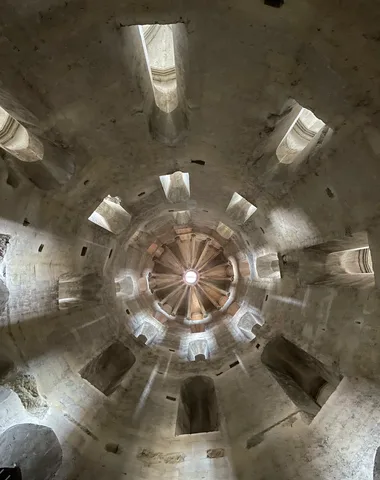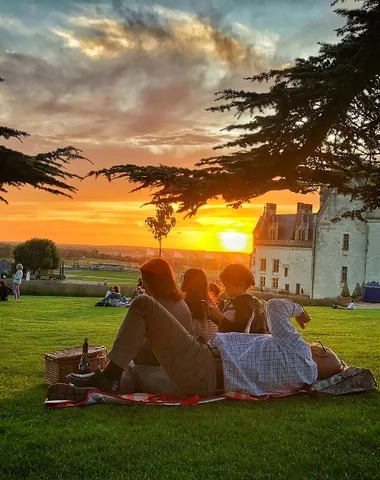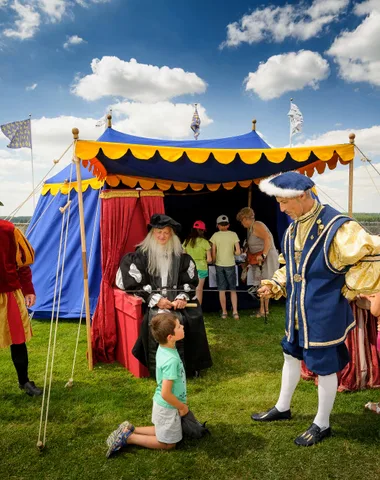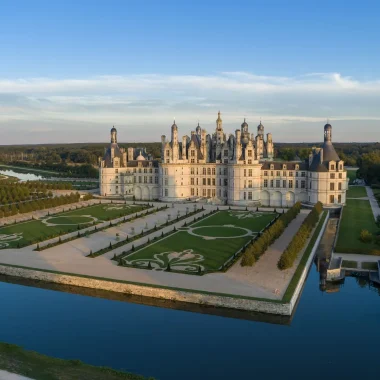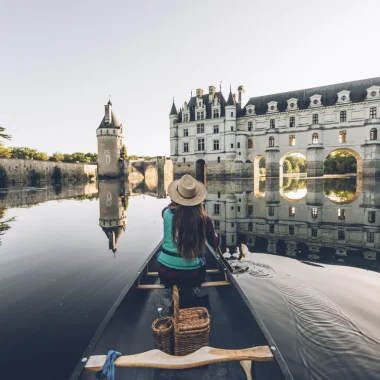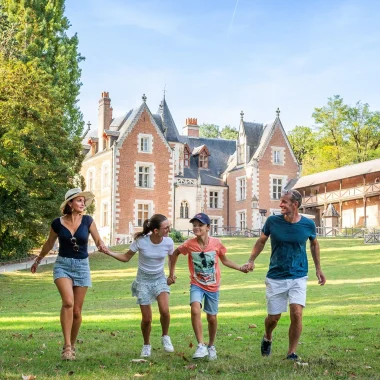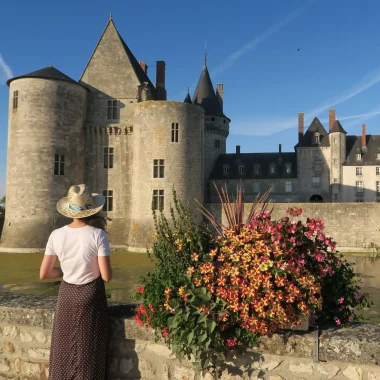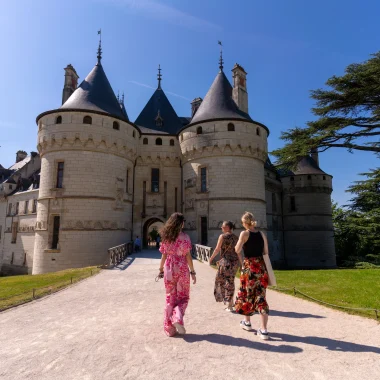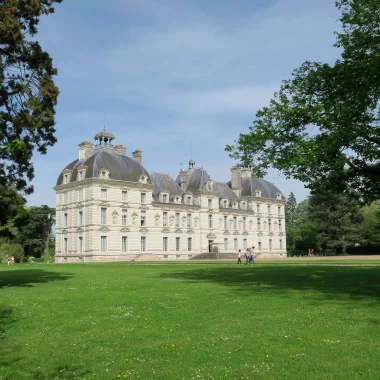Accueil Discover The Loire Châteaux The royal château of Amboise
THE ROYAL CHÂTEAU OF AMBOISE: A SUMPTUOUS BALCONY OVER THE LOIRE
Built on a rocky outcrop, the Royal Château of Amboise majestically surveys the Loire. The château became a royal residence at the start of the Renaissance and was the first to introduce the Italian taste to the Loire Valley thanks to King Charles VIII, who built it. The work was continued with enthusiasm by King Francis I, with the help of the Tuscan genius Leonardo da Vinci, who is buried in the château’s chapel. Today, visitors can discover the château during an unforgettable visit that will reveal all the secrets of this sumptuous building and true gem of a château!
THE ROYAL CHÂTEAU OF AMBOISE: A STORY THAT STARTED IN ANTIQUITY
Ever since prehistoric times, the rocky outcrop of Amboise and its exceptional views have offered many advantages for those who settled there. The site was quickly fortified and entered history books in the 5th century after the battle between Clovis and the Visigoth King Alaric. First a residence then a barracks for campaign veterans after the Revolution, the Royal Château of Amboise has seen all the major events in the history of France. Its decor from the early French Renaissance period has welcomed many a prestigious guest who left their mark!
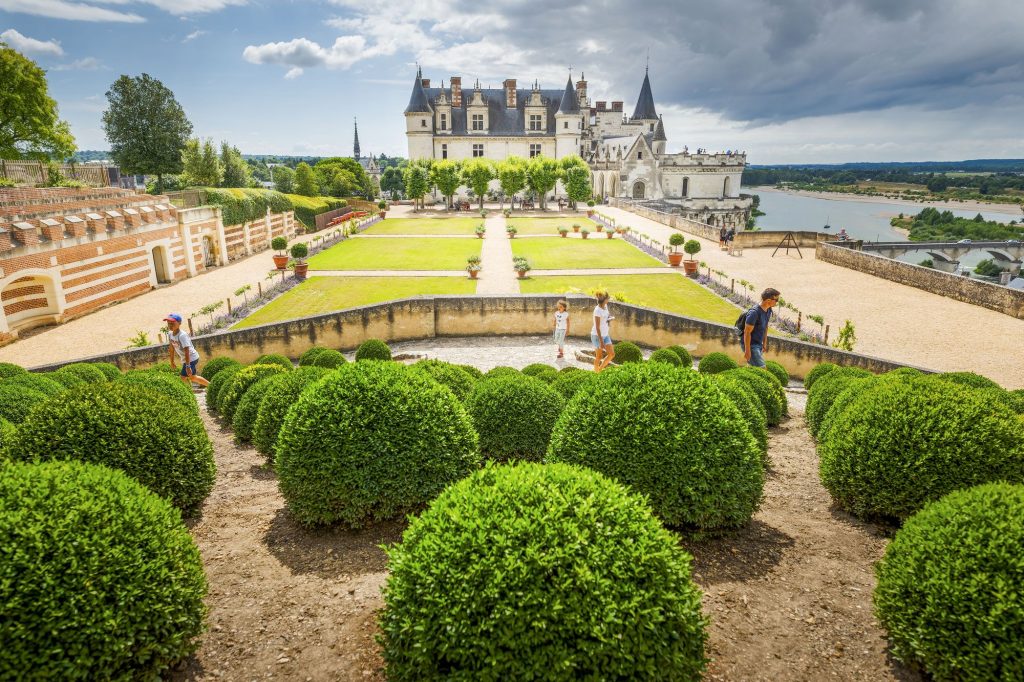
JC Coutand – ADT Touraine
In the 15th and 16th centuries, the Royal Château of Amboise had a special status as the favourite residence of the Kings of France and a place to bring up their children. It was the childhood home of Francis I and it was during the latter’s reign that the Royal Château of Amboise reached the height of its glory. Several years later, the children of King Henry II and his wife Catherine de’ Medici were brought up here, and Louis XIV and Louis-Napoleon Bonaparte also both spent brief periods at the château. Now it is your turn to walk in the footsteps of these prestigious figures!
JC Coutand – ADT Touraine
MUST-SEES AT THE ROYAL CHÂTEAU OF AMBOISE
JC Coutand – ADT Touraine
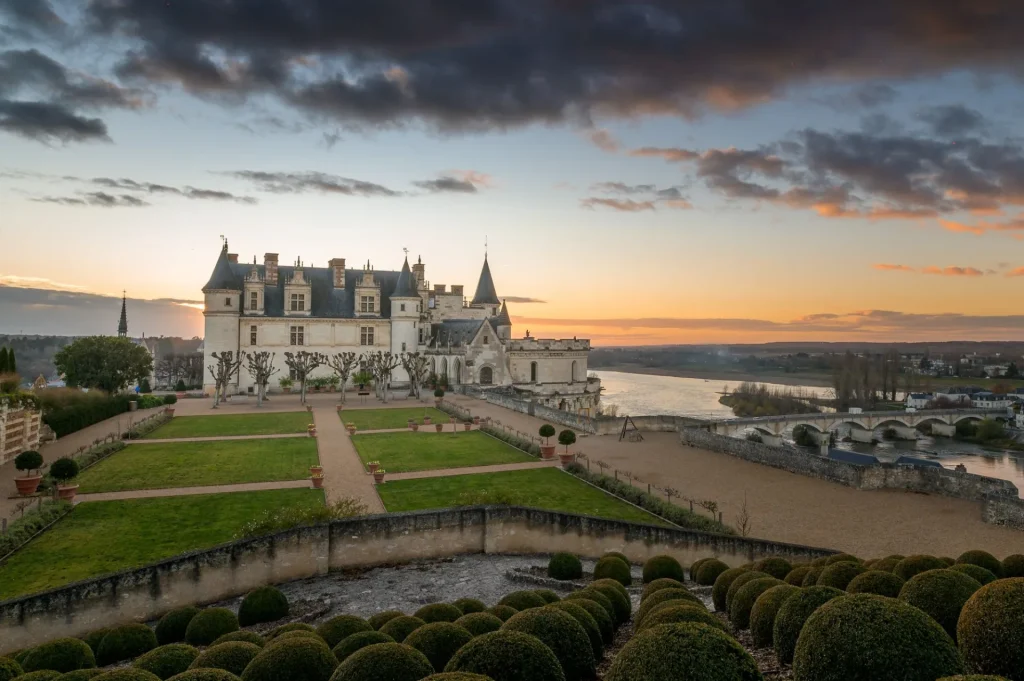
THE ROYAL APPARTMENT
Once a nerve centre of activity for the French court in the château, the Royal Apartment is spread over three floors that are open for visit: the ground and first floors are dedicated to the Renaissance, while the second floor is dedicated to the 19th century and the reign of Louis-Philippe. Highlights of the visit include the Council Room where the king held audiences, the Guard Room, the King’s Bedchamber and the impressive Minimes Cavalry Tower!
THE SAINT HUBERT CHAPEL
The jewel in the crown of the Royal Château of Amboise, this chapel was the private oratory of the kings of France and appears to literally float above the city. The building also contains Leonardo da Vinci’s grave. The celebrated Italian painter lived in the nearby Château of Le Clos Lucé at the invitation of Francis I, who gave him full use of the estate.
Erwan Fiquet
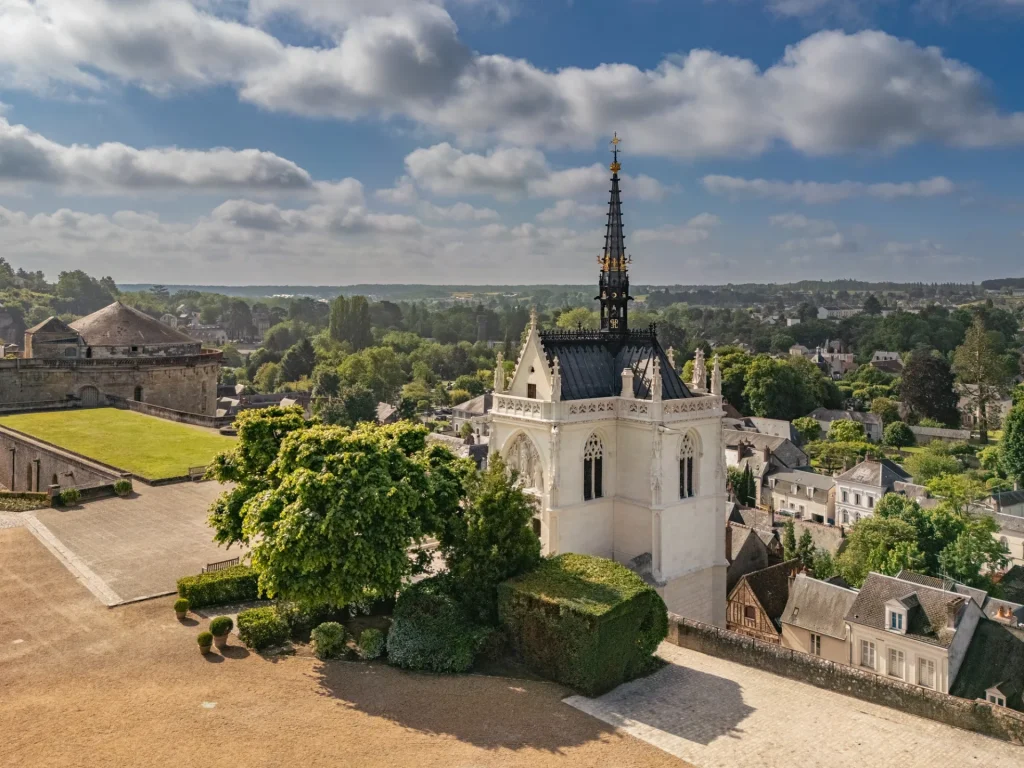
Léonard de Serres
JC Coutand – ADT Touraine
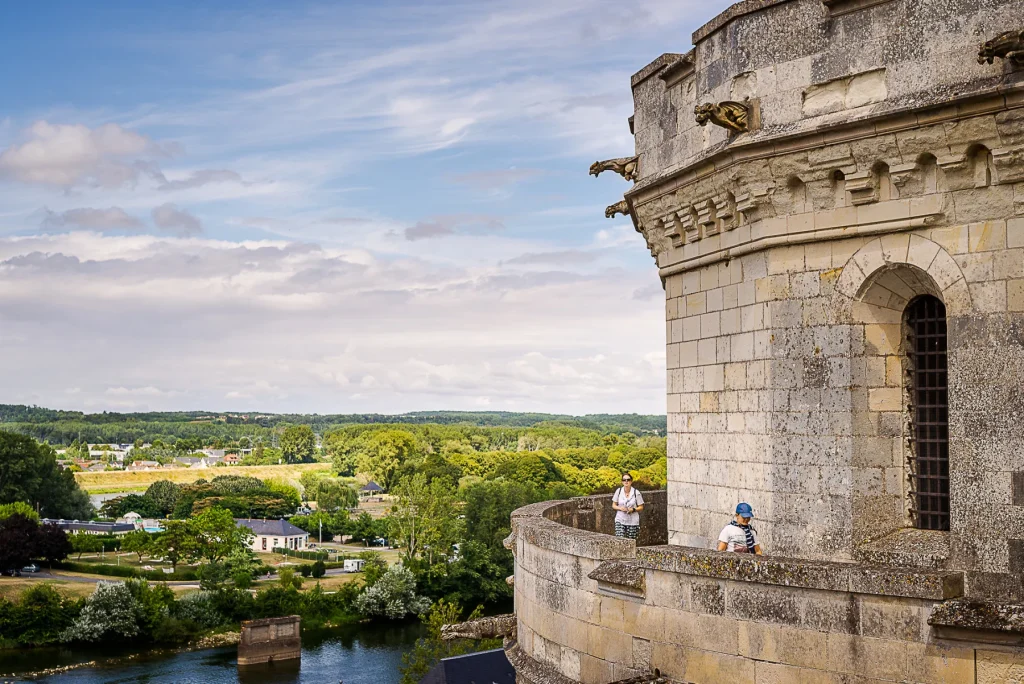
THE RAMPARTS
As you explore the picturesque grounds, climb up to the château’s ramparts to enjoy breathtaking views over the Loire Valley. To the west, you can admire a stunning prospect of the city, while to the east, the Loire and a rich expanse of countryside stretch out as far as the eye can see.
FAMOUS PEOPLE OF THE CHÂTEAU
Over the centuries, the royal Château of Amboise has welcomed many famous figures. Kings and queens, but also artists, have left their mark on its walls with their history.
- Charles VII (1403-1461) incorporated the Château d’Amboise into the royal domain in 1431. He established a company of archers there, reinforcing the site’s strategic role. Residing mainly in Chinon, he made Amboise a military and symbolic stronghold, setting the stage for the château’s royal destiny under subsequent reigns.
- Although he lived at the Château de Plessis-lès-Tours, Louis XI (1423-1483) settled his wife and children at the royal château in Amboise, far from the court. He ensured the education of the Dauphin Charles, the future Charles VIII, whom he visited regularly. The château became a discreet but essential place for princely education and the transmission of royal power.
- Charles VIII (1470-1498) was born and raised in the castle with his mother and sisters. At the age of 13, upon his father’s death, his sister Anne de Beaujeu became regent. He gained his independence in 1491 and married Anne of Brittany, sealing the union between the Kingdom of France and the Duchy of Brittany. He transformed the fortress into a royal residence, adding lodgings and cavalier towers. He died accidentally in Amboise in 1498.
- In 1491, Anne of Brittany (1477 – 1514) annulled her marriage with Maximilian I of Habsburg in order to marry Charles VIII, King of France. She moved to the Château d’Amboise but was widowed by the king’s premature death. Faithful to the terms of their union, she married Louis XII in 1499 and became Queen of France twice. She died in Blois in 1514.
- A Neapolitan gardener, Dom Pacello Da Mercogliano (1453 – 1534) came to France after Charles VIII’s Italian campaign. Passionate about botany, he introduced Renaissance art to French gardens. He worked at Amboise, Château Gaillard, Blois, and then Gaillon, combining geometry, perspective, and a new elegance.
- Francis I (1494-1547) spent part of his youth at the Château d’Amboise with his mother, Louise de Savoie. There he received an education steeped in humanism and Italian culture. Once he became king, he remained very attached to this place. In 1516, he invited Leonardo da Vinci to come and live at the nearby Clos Lucé. When Leonardo died, he ensured that he was buried in the Saint-Hubert Chapel.
- A multi-talented Renaissance genius, Leonardo da Vinci (1452 – 1519) was invited to France by Francis I in 1516. Settling at Clos Lucé near the Château d’Amboise, he became “First Painter, Engineer and Architect to the King,” designing sets, machines, and numerous projects. Upon his death in 1519, he was buried in the Saint-Hubert Chapel.
- Even before she was born, Catherine de Medici (1519-1589) had ties to the Château d’Amboise, as her parents were married there in 1518. After becoming queen by marrying King Henry II, she raised their children at the château, three of whom would go on to ascend the throne of France. Catherine de Medici’s Italian influence brought the Renaissance to France.
- Louis-Philippe I (1773-1850) made his mark on the history of the Château d’Amboise in 1821 when he transformed it into a country residence. After becoming king in 1830, he actively promoted heritage preservation, supporting the classification of sites of national historical significance. The Château d’Amboise was among the first to be listed, in 1840.
- Defeated by French troops in 1847, Emir Abd el-Kader (1808-1893) was held prisoner at the Château d’Amboise from 1848 onwards. For four years, this figurehead of the Algerian resistance lived there in captivity with his family. In 1852, Louis-Napoléon Bonaparte ended his imprisonment. The Emir ended his life in Syria, devoting himself to teaching, meditation, and defending humanist values.
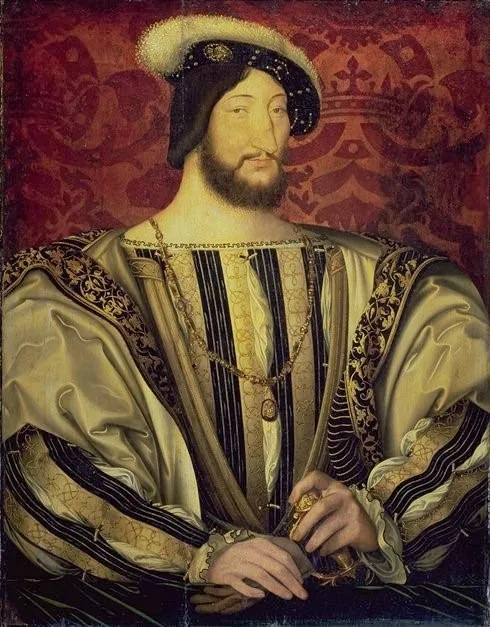
château royal d’Amboise
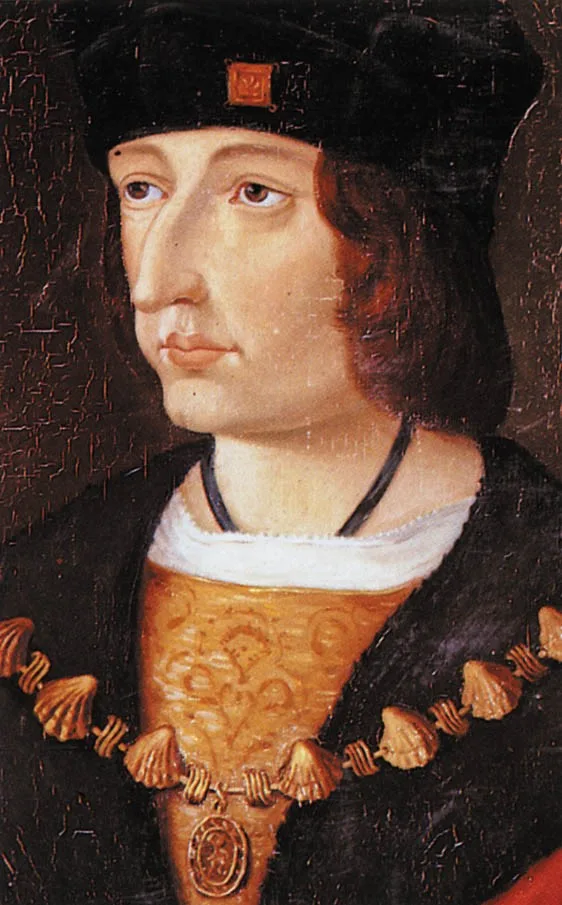
Château royal d’Amboise
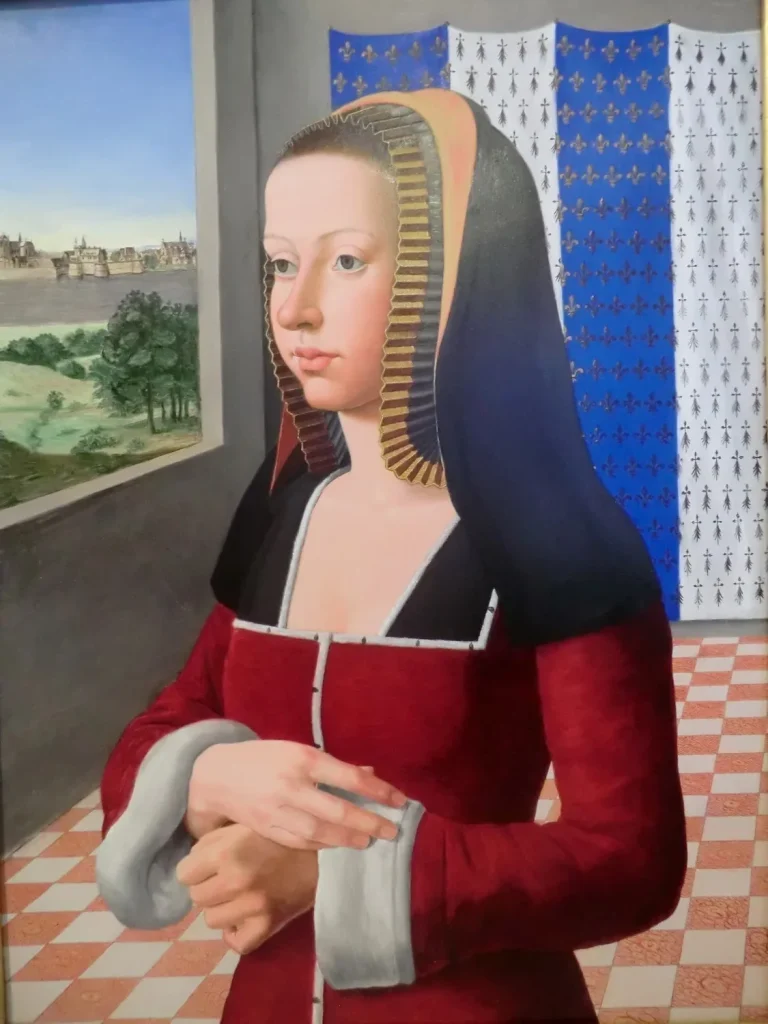
Château royal d’Amboise
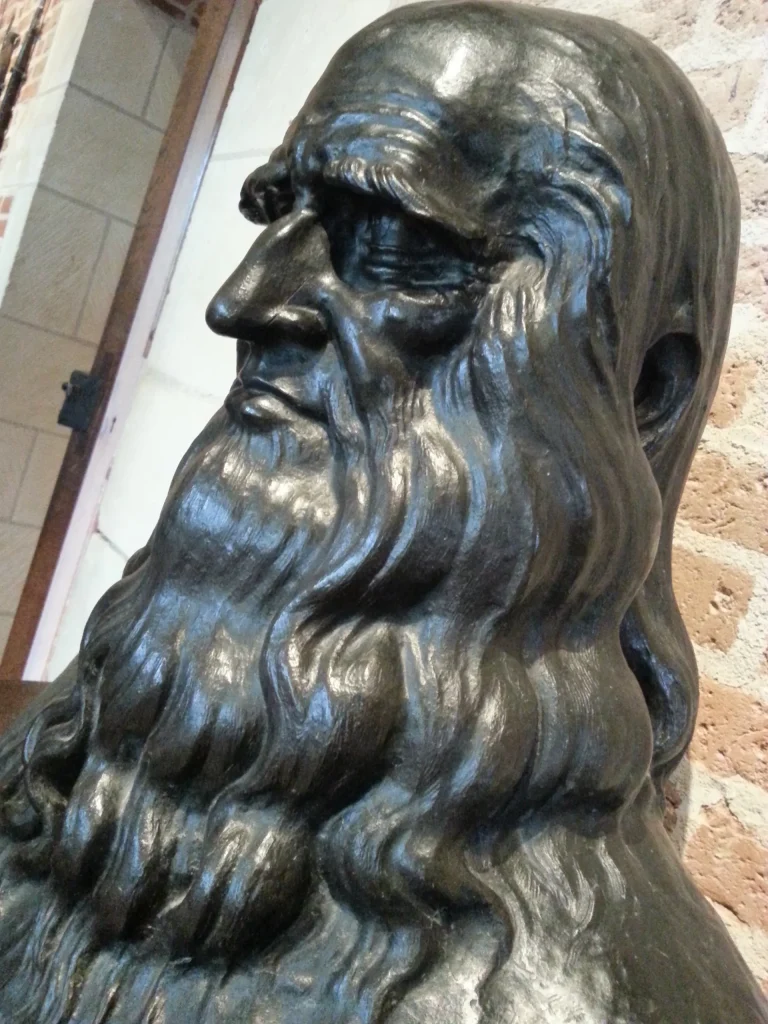
V. Treney – CRT Centre-Val de Loire
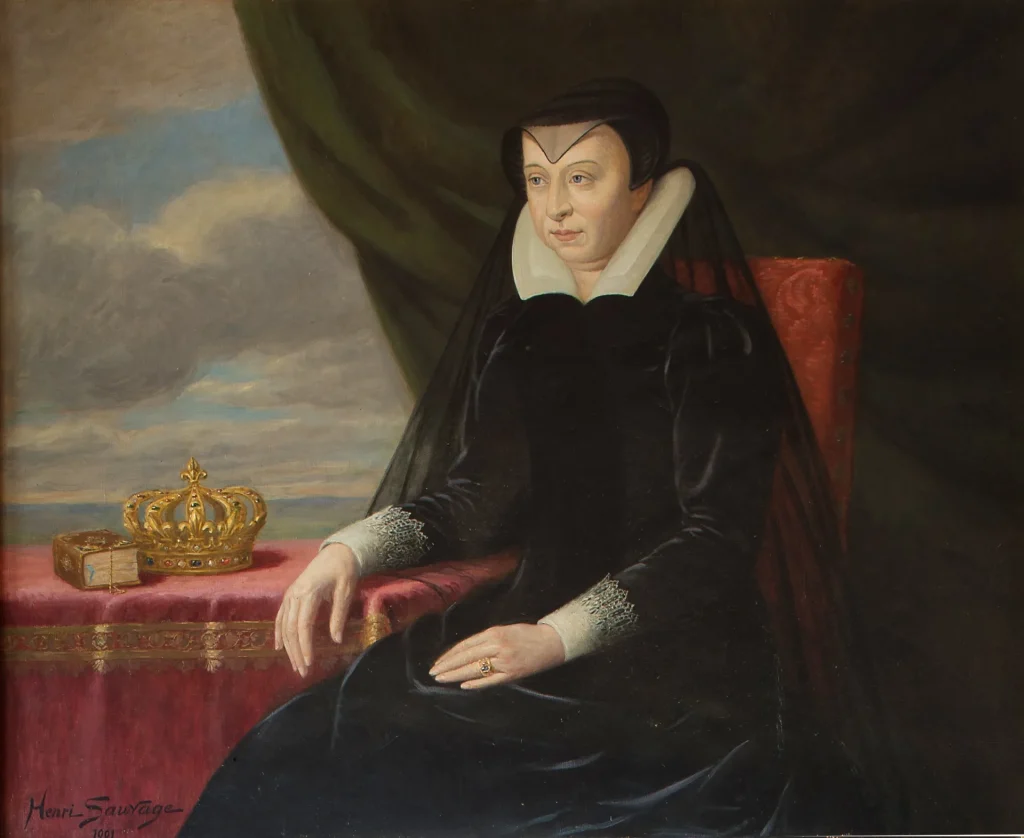
Château de Chenonceau
VISIT THE ROYAL CHÂTEAU OF AMBOISE IN A NEW WAY WITH A HISTOPAD
Do you want to explore the Royal Château of Amboise in an unusual way? Pick up a HistoPad, a free and easy-to-use mediation tool that will open the doors to an augmented reality visit. With the device, you will meet the familiar faces of Francis I and Leonardo da Vinci and admire beautifully recreated decor from the past!
EVENTS AT THE ROYAL CHÂTEAU OF AMBOISE
01
July
31
August
2025
Visite guidée dans les coulisses de l’histoire au Château royal d’Amboise
12
July
20
August
2025
The
14
July
2025
Panoramic picnic evening at the Royal Château d’Amboise – July 14
26
July
27
July
2025
The
18
October
2025
FAQ
How do I get to the Royal Château of Amboise?
You can access the Royal Château of Amboise via the Emir Abd El Kader ramp. There are several car parks nearby. Situated at the heart of the Loire Valley, the city of Amboise is just 20 minutes from Tours by train and approximately 2 hours 40 minutes from Paris by car. You can also cycle to the château along the dykes of the Loire.
Good to know: the train station in Amboise is just 10 minutes’ walk from the foot of the château.
Is it possible to have lunch at the Royal Château of Amboise?
The Café du Château is open all summer long, offering a simple, delicious menu featuring salads, quiches, sandwiches, and sweet treats. Enjoy a selection of beverages with your meal, either on site or to go. Sit on the terrace and savor the moment, or take your snack with you, depending on what you feel like doing.
What is the best way to book a visit?
Save time and prepare your visit to the Royal Château of Amboise by booking your ticket via the link below!
OPENING TIMES OF THE ROYAL CHÂTEAU OF AMBOISE
Château Royal d’Amboise
37400
AMBOISE

